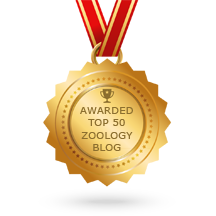In more than 40 years of cryptozoological researches and writings, I have been proud and privileged to introduce to the cryptozoological community and beyond a considerable number and notable diversity of cryptids whose details had been hitherto consigned to obscure, overlooked periodicals, books, and other passed-over publications. One such mystery beast is the mulilo, whose details I uncovered in a long-since-forgotten Empire Review article, but which I duly documented and discussed in one of my own books, From Flying Toads To Snakes With Wings, first published in 1997, and which was the very first crypto-themed publication to include it.
Today, conversely, numerous online websites have also documented this creature, but as far as I can tell their coverages are merely paraphrasings of my book's original version, with no new, additional content Yet my book is seldom referenced as their source, sadly.
Consequently, coupled with the regrettable fact that certain of these online paraphrased coverages are far from accurate iterations of mine anyway, I've decided to present on ShukerNature my book's original, concise account of the mysterious mulilo – so here it is.
Dream a dream of a mysterious dragon that only appears when a rainbow is resting upon the vivid, viridescent hillsides of Zaire [now the Democratic Republic of Congo] and Zambia – a creature whose reality is widely accepted by many native people in these tropical African countries. One might expect such an Arcadian, picturesque scenario to inspire images of a bright, evanescent entity with sparkling opalescent scales, a proud noble head of classical profile, and sweeping, polychromatic butterfly wings – a golden, glittering creature of Faerie, of heady sunlit reverie.
Yet nothing could be further from the truth, because the image that these people do visualize when contemplating this creature is an evocation of much darker dreams. According to their belief, Central Africa's rainbow-summoned dragon, known as the mulilo, is a gigantic, coal-black, slug-like beast of loathsome form, almost 6 ft in length, over 1 ft in width, and leaving death in its wake – the deadly legacy of its poisonous breath.
One could certainly be forgiven for considering the mulilo to be nothing more than a fanciful folktale. Yet as reported in 1940 by W.L. Speight within an Empire Review article on African mystery beasts, a living, corporeal animal is apparently involved, because pieces of blackened flesh said to be from dead mulilos are worn by some natives as fertility charms.
There is no known species of slug that attains the size attributed to the mulilo; in any event, the bodies of slugs are relatively insubstantial, little more than slender gelatinous sacs - hardly the likeliest of materials to remain intact for utilization as charms. Perhaps, therefore, the blackened flesh is really from a slug-like snake, or even a serpentine salamander (like the sirens of North America).
Even so, the thorny question remains as to whether this corporeal creature is truly the mulilo, or whether its flesh is merely used by the natives to vindicate their belief in what is actually a non-existent, wholly mythical beast? If the flesh is from a mulilo (regardless of what species it may belong to), how do the natives obtain it?
According to Speight, they set a trap – building a secure cage, lined internally with sharp blades, and baited with a living cockerel. Then they simply wait each night, and listen. On the morning that no cock-crow is heard, the natives celebrate and journey joyfully to the cage – for they know that inside it they will find the mulilo, dead, impaled upon the blades during its capture of the cockerel.
Yet despite this apparently successful method of obtaining mulilo remains, the mulilo is as mysterious and unidentified today as it was when documented by Speight over half a century ago [almost a full century ago now]. Moreover, it does not even seem to have been reported again. Perhaps rainbows have been rare in Zaire and Zambia lately?
My view concerning the mulilo that I held back in the late 1990s remains unchanged today, almost 30 years later. Namely, that if it is indeed a real, flesh-and-blood entity, it is most likely to be some form of black-scaled snake, possibly a fairly thick-bodied or sturdy one, perhaps even a melanistic variety of a species already known to science.
Over the years I have documented a number of times with a variety of different examples that in the culture of many indigenous peoples from around the world, aberrant animal specimens, such as melanistic, albinistic, or extra-large individuals, for instance, are often categorised by them as being fundamentally (rather than merely superficially) distinct, wholly separate creatures from normal specimens of the same species, and are even given wholly separate names by them.
So if the mulilo were indeed nothing more than an all-black form of a known snake species but deemed special by the locals on account of its unexpected colouration, this would not be in any way surprising.
In addition, certain snakes, especially large meat-eating constricting species such as the African pythons, are notorious for the foul stench of their breath. So if the mulilo is simply a melanistic version of one such species, this could plausibly explain native testimony (conceivably somewhat exaggerated or embellished if retold to the more ingenuous of Westerners?) relating to its allegedly poisonous exhalations.
If only further details could be obtained. So if anyone reading this ShukerNature article is aware of any addition information appertaining to the mulili, I'd love to hear from you, so please comment below with your news – many thanks indeed!
Excerpted from my book From Flying Toads To Snakes With Wings (Llewellyn: St Paul, 1997).






































